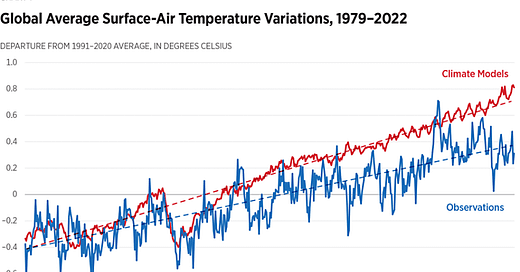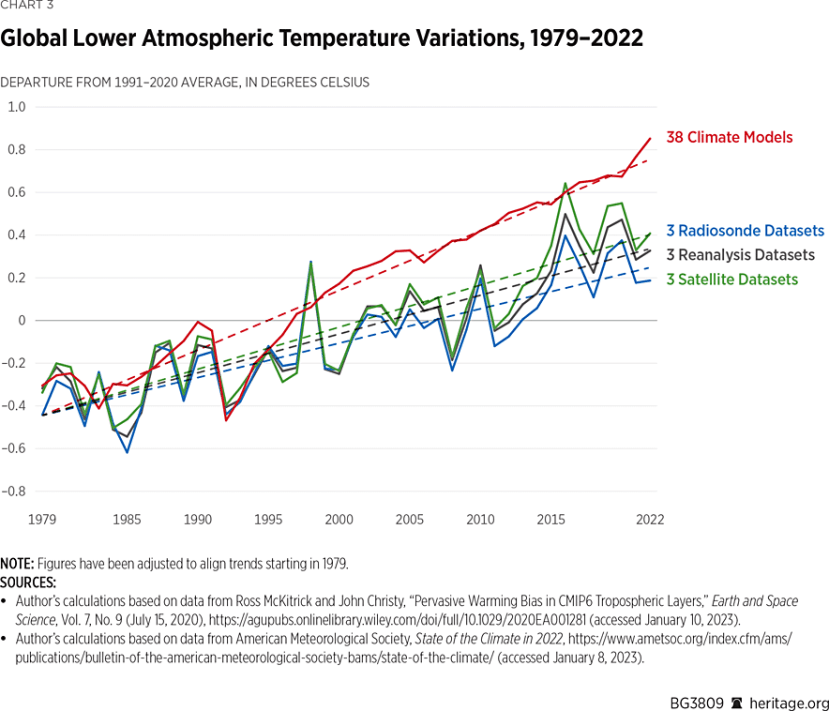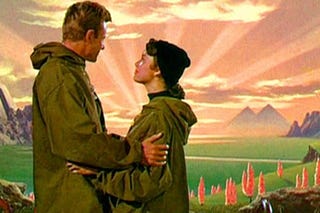
I am, and you will be, too, absolutely delighted by a new paper by Roy Spencer: “Global Warming: Observations vs. Climate Models“.
This is a paper that will be celebrated with great joy and fervor by the great sea of people who are worried, near unto death, that “climate change” is going to cause the destruction of all things.
Roy showed that, “The observed rate of global warming over the past 50 years has been weaker than that predicted by almost all computerized climate models.”
And that, “Climate models that guide energy policy do not even conserve energy, a necessary condition for any physically based model of the climate system.”
He concluded: “Public policy should be based on climate observations—which are rather unremarkable—rather than climate models that exaggerate climate impacts.”
What wonderful news! News sure to be welcomed by activists, politicians, and exhausted windmill replacement blade salesmen the world over!
All those people who drag themselves out to early morning marches can sleep in! Been considering gluing yourself to works of art or the asphalt? No need! And you needn’t keep your appointment with your therapist to work on your devastating climate anxiety. Hallelujah, there is nothing to be anxious about!
I fully expect the White House will invite Roy to receive some kind of medal or award for the great scientific service he has done our panicked nation, and indeed the world. There is no reason for the anxious, nerve-wracking despair we have seen from all quarters. The order of the day shall be Stand Down and Enjoy the Weather!
Right?
Here’s the best bits, which are so good they’re self-explanatory.
We’ll come back to that caption in a moment. Because what it means is that things are even better than Roy has suggested, sober and cautious man that he is.
This is the kind of plot scientists or yore would look at and say, “Oops.” As we are confident modern scientists will do, too. They got it wrong, and badly wrong. Embarrassingly wrong. So wrong that they will surely go back and fix the mistakes before allowing anybody to even see, let alone rely on their models.
What I like best about this are those three lines, the green, black, and blue ones, which show the average temperatures from three different measurement sources. I make the discrepancy between the three 0.2C at the end, or perhaps a bit larger. Say, that’s a lot, isn’t it? Especially when the hand-wringing in the “climate community” has been over tenths of a degree changes.
What this means is that there is more uncertainty in climate measurements than what is normally considered. So much more uncertainty that it is yet another reason not to worry. The good news multiplies!
Roy goes on to suggest why climate models produce too much warming, and gives hints about other causes besides man that account for observed signals in temperature. Read the whole report. It’s good—and cheering!
He says things like, “The models must be ‘tuned’ to produce no climate change, and then a human influence is added in the form of a very small, roughly 1 percent change in the global energy balance.” This kind of tuning over such a small signal would make any model hyper-sensitive to the tuning. Which indeed we see.
Let’s return to the footnote on the first plot, which brings us to this site. Which you might want to play with. One word you’ll see on the site is “hindcasts”. I don’t want to get into the details today, but what it means is that past data is used to make predictions of the past. The past data is first used to create the models which make the predictions.
Nothing wrong with that, of course, because models have to be built somehow. But it does mean hindcasts—predictions of past data that was used once already in creating the models—will be better than forecasts, which are predictions of data never before seen.
So that when we look at the first picture and it looks like the models did better in the past, the reason for that is at least partly because the models are tuned to that data. Which means that true model performance is better estimated at the ends of the series. Which is worse performance. Which is more good news!
Another thing I think is true here (though I welcome correction) is that these are all one- or a few-time-periods-ahead predictions. That is, a climate model today could make monthly or yearly temperature predictions for next month or next year, or two months ahead or two years. Or three years, four, and so on. The predictions farther out will, all evidence suggests, be worse, and even far worse, than predictions made one time period ahead.
I think these pictures are all one-time-period-ahead predictions (made one at a time). If so, and if the farther-out predictions are worse like we expect them, and given the poor performance of these models near term, then that means we must put even less (or even no) trust in long-term predictions.
Which, again, is more great news! Whoo-hooo!, as The View audience would hoot. Because if the models are that bad, there’s no reason to get worked up over them.
I saved the best news for last. Most of what knots peoples’ panties about “climate change” are not small changes in some weird artificial global average temperature, but all the bad stuff that “climate change” is said will cause. Which is every bad thing.
Don’t you see why that’s terrific? Since the climate is not as bad as the models predicted, all that other bad stuff can’t be so bad either. Fantastic! Let us hear the sighs of relief sure to greet this spectacular news!
Subscribe or donate to support this site and its wholly independent host using credit card click here. Or use the paid subscription at Substack. Cash App: $WilliamMBriggs. For Zelle, use my email: matt@wmbriggs.com, and please include yours so I know who to thank.


















It should be kept in mind that the winter of 1978-79 was unusually cold in some parts of the Northern hemisphere. So there might be a bad baseline problem, too.
Worth noting. Climate crazies like to refer to "pre-industrial" levels of CO2. The date happens to be 1850, which, oddly, was the end of the Little Ice Age, the coldest (and long) spell for some thousands of years in the Holocene.
Odd, would it not be, were temperatures NOT to rise given that. And - given that - a rise of some 1.4° C is utterly unremarkable, and indeed, welcome. The benefits of a warmer planet, and the greening effect of more CO2 are what we need. Note also that CO2 levels are pretty much as low as they have EVER been.